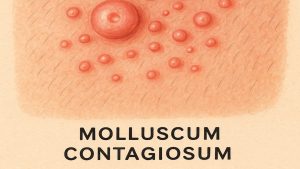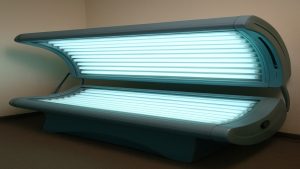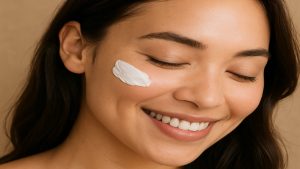- Benign skin growths commonly appear on the nose
- Caused by fibrous tissue overgrowth in the dermis
- Stable lesions differ from basal cell carcinoma
- Treatments include excision, cryotherapy, or laser
- Proper aftercare supports healing and reduces marks
Fibrous papules are small, harmless skin growths that often develop on the nose or nearby facial areas. While medically benign, many people seek treatment for cosmetic reasons.
This article explains what fibrous papules are, how to distinguish them from other skin conditions, and explores safe, evidence-based treatments and aftercare options for optimal results.
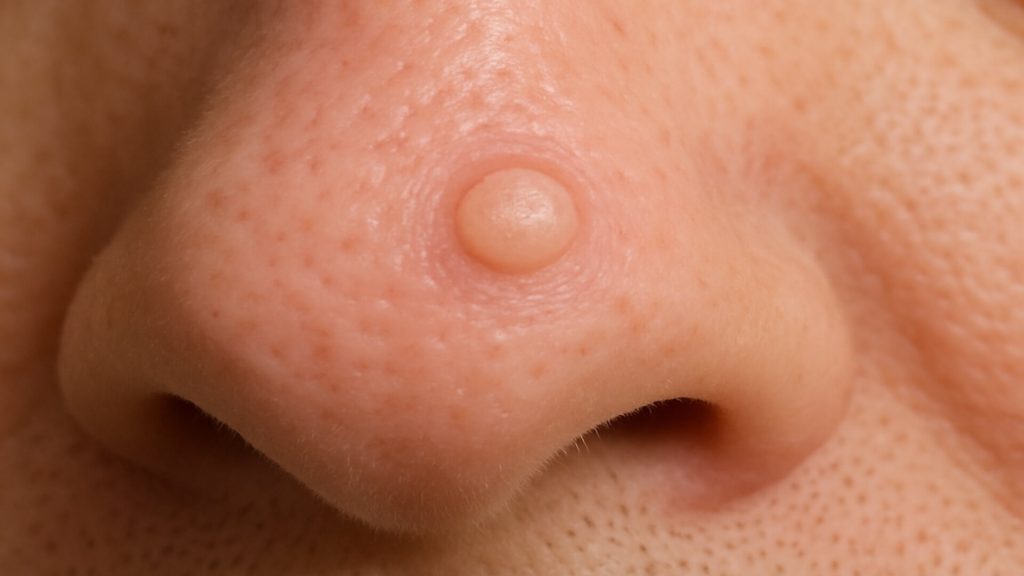
What Are Fibrous Papules
Fibrous papules are firm, dome-shaped bumps made up of collagen, fibrous tissue, and blood vessels [1,9]. They typically measure 2–4 mm and vary from pink to skin-toned.
These lesions, often solitary, are a type of angiofibroma most commonly found on the nose. They are non-cancerous, painless, and do not spread or cause complications [1,9].
Causes Of Fibrous Papules
The cause of fibrous papules remains uncertain. They are believed to result from local overgrowth of fibrous tissue in the dermis, possibly involving dendritic cells [9]. Most cases occur randomly in adults without lifestyle triggers [1].
In rare instances, multiple papules can be associated with genetic conditions such as tuberous sclerosis or multiple endocrine neoplasia type 1 [2]. However, solitary lesions are far more common and unrelated to hereditary factors [1].
Fibrous Papule Vs. Basal Cell Carcinoma
Accurate differentiation between fibrous papules and basal cell carcinoma (BCC) is essential. Fibrous papules are smooth, firm, and stable in size, while BCC may bleed, crust, or enlarge over time [1,5].
Dermoscopy can help distinguish them. Fibrous papules show a uniform pink or white background with fine blood vessels, whereas BCC often exhibits pearly or pigmented features. When uncertain, dermatologists may perform a biopsy for confirmation [1].
When To Consult A Dermatologist
Although fibrous papules are benign, changes such as rapid growth, bleeding, or altered colour require professional evaluation. The NHS recommends seeking medical assessment for any changing or persistent skin lesion [5]. Early review ensures correct diagnosis and peace of mind.
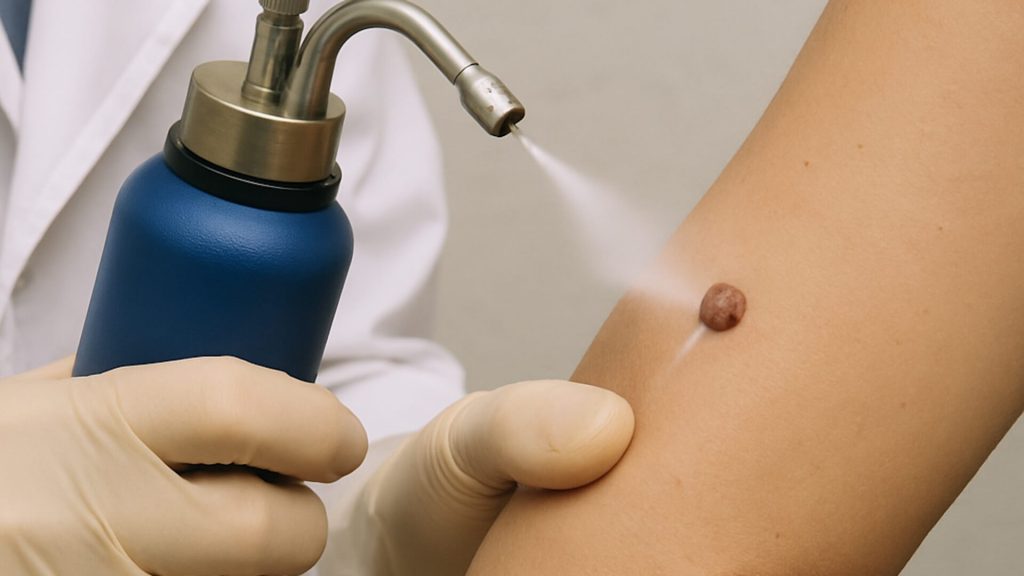
Treatment Options For Fibrous Papules
Dermatological treatments for fibrous papules are usually chosen for cosmetic improvement. The best method depends on the lesion’s size, location, and skin type [1,3].
Excision
A dermatologist can remove the papule under local anaesthesia using a fine scalpel. Excision provides immediate, permanent removal with minimal scarring when performed carefully [1,3].
Cryotherapy
Cryotherapy freezes the lesion using liquid nitrogen until it detaches naturally. While safe, it is less commonly used for facial papules due to the risk of irritation or temporary pigmentation, especially in darker skin [3].
Laser Treatment
Laser therapy uses focused light to vaporise the papule with precision. Pulsed dye and CO₂ lasers are frequently used and can achieve smooth results with minimal downtime [3,4].
Electrocautery
This treatment applies controlled electrical heat to remove the papule and seal small blood vessels, reducing bleeding and supporting rapid recovery [3].
| Treatment Option | Summary |
|---|---|
| Excision | Surgical removal under local anaesthesia, highly effective with minimal scarring. |
| Cryotherapy | Freezes lesion with liquid nitrogen, less common for facial use. |
| Laser Treatment | Uses pulsed dye or CO₂ laser for precise, quick recovery. |
| Electrocautery | Removes lesion using heat, ideal for small papules with minimal downtime. |
Each approach can be effective when performed by a qualified dermatologist. Excision and laser treatment are most common for facial areas because they offer precision and predictable cosmetic outcomes.
Post-Treatment Care
After fibrous papule removal, correct aftercare supports healing and prevents pigmentation or scarring. Dermatologists generally recommend the following:
- Gently cleanse the area with mild soap and water.
- Apply an antibacterial ointment as advised.
- Protect from sun exposure using SPF 30 or higher.
- Follow all aftercare guidance from your healthcare provider.
Sun protection is especially important to reduce post-treatment pigmentation, particularly on facial skin [1].
Monderma’s Role In Post-Excision Care
After excision, personalised skincare can support recovery. Monderma’s prescription skincare, created by GPhC-registered prescribers, combines hydrating and restorative actives in a vegan base with hyaluronic acid and peptides.
Depending on skin type, formulations may include:
- Azelaic acid (3–20%) to reduce melanin synthesis and prevent post-inflammatory pigmentation [6].
- Niacinamide (2–4%) to strengthen the skin barrier and reduce redness [7].
- Tretinoin (0.025–0.1%) to enhance gentle skin renewal and improve texture [8].
A 2024 study showed that 15% azelaic acid gel effectively treated post-inflammatory hyperpigmentation [6]. Niacinamide aids recovery by supporting the barrier function, while tretinoin promotes regeneration and smoother results over time.
Monderma offers a free online consultation for UK residents aged 16 and above. Each formulation is reviewed by a prescriber to ensure safety and suitability during the recovery process.
Conclusion
Fibrous papules, most often seen on the nose, are harmless lesions typically removed for cosmetic reasons. Understanding their characteristics and available treatments such as excision, cryotherapy, laser therapy, or electrocautery allows informed decisions about care.
Consulting a dermatologist can ensure accurate diagnosis and optimal results. Following treatment, Monderma’s personalised skincare can support healing, helping to maintain smooth and even skin tone with minimal scarring or pigmentation.
Content is for informational purposes only. Monderma treatments are prescribed following consultation. Results and timeframes can vary. Use as directed by your prescriber.
Bibliography
- Oakley A. Fibrous Papule of the Nose. DermNet. Published October 26, 2023.
- Pack S, Turner ML, Zhuang Z, et al. Cutaneous Tumors in Patients with Multiple Endocrine Neoplasia Type 1. J Clin Endocrinol Metab. 1998;83(3):1007–1011.
- Typology. Fibrous Papule: How to Eliminate It? Published October 23, 2024.
- Boixeda P, Sanchez-Miralles E, Azana JM, et al. Laser Treatment of Angiofibromas. J Dermatol Surg Oncol. 1994;20(12):808–812.
- NHS. Skin Cancer (Non-Melanoma). NHS Inform UK. Updated October 2024.
- Shucheng H, Zhou X, Du D, et al. Effects of 15% Azelaic Acid Gel in the Management of Post-Inflammatory Hyperpigmentation. Dermatol Ther (Heidelb). 2024;14(5):1293–1314.
- WBCL. Barrier Repair Reinvented: How Liposomal Niacinamide Calms and Strengthens Sensitive Skin. Published June 12, 2025.
- Govender K. The Use of Tretinoin Cream in the Management of Scars. Published March 12, 2025.
- Damman J, Biswas A. Fibrous Papule: A Histopathologic Review. J Cutan Pathol. 2018;45(11):803–810.
Find your perfect skincare formula
Takes less than 2 minutes – see what your skin needs
Get Custom Formula